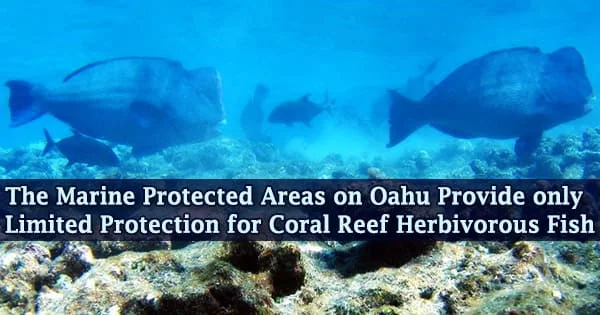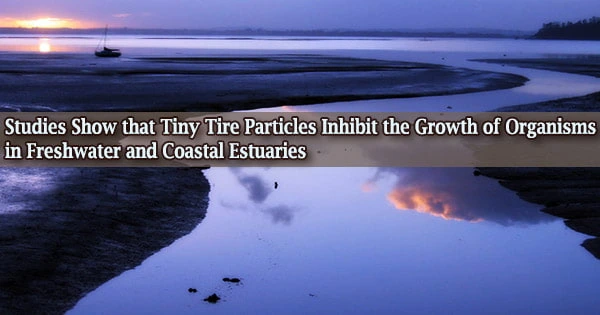Herbivorous reef fishes that feed algae on coral reefs are not effectively protected by marine protected areas (MPAs) near Oahu. Researchers from the University of Hawaii at Manoa School of Ocean and Earth Science and Technology (SOEST) released a study in Coral Reefs that came to this result.
MPAs are protected areas that restrict human activities for the purpose of conservation, usually to safeguard natural or cultural resources. Local, state, territorial, native, regional, national, or international authorities preserve these marine resources, which vary greatly within and between nations. To define ecological borders and set MPA objectives, it is critical to have a thorough understanding of the area.
It’s also crucial to have public support and well-established surveillance and compliance monitoring systems. In some cases (such as the Phoenix Islands Protected Area), MPAs can offer countries with money that is comparable to what they would receive if they granted corporations fishing licenses. It is unknown how important MPAs are to mobile species.
On Hawaiian reefs, around 20 species of herbivorous fish and ten species of herbivorous urchins can be found. These species eat algae that grow on reefs, a process is known as herbivory, which helps coral reefs remain resilient by preventing algal dominance, which can lead to coral overgrowth.
Corals, on the other hand, are rapidly losing their most powerful partners. Herbivorous fish populations are declining, notably in the Caribbean. Because commercial species are over-fished, artisanal fishers are capturing even the tiniest herbivorous fish, preventing those species from rebuilding their populations.
Marine protected areas are a fishery management tool to limit or prevent fishing to help the recovery and maintenance of fish abundance and biomass inside the MPA. An effective MPA should lead to a considerably higher abundance and biomass of fishes inside the MPA boundaries that would otherwise be caught by fishers but that wasn’t what our study found.
Erik Franklin
Three of the four marine protected zones studied around Oahu did not provide ecologically meaningful benefits for herbivorous fish populations when compared to reefs outside the boundaries, according to the researchers.
“Marine protected areas are a fishery management tool to limit or prevent fishing to help the recovery and maintenance of fish abundance and biomass inside the MPA,” said senior author Erik Franklin, Associate Research Professor at the Hawaii Institute of Marine Biology in SOEST.
“An effective MPA should lead to a considerably higher abundance and biomass of fishes inside the MPA boundaries that would otherwise be caught by fishers but that wasn’t what our study found.”
According to recent studies, many reef fishes are very picky about the algae they eat. These fish’s food preferences may be linked to their morphological and digestive capacities to break down algal cell walls. Although certain algae species are obviously avoided, sea urchins choose more based on relative abundance.
Habitat complexity and depth were also factors impacting herbivorous fish biomass, showing that coral reef environmental characteristics may have had a greater impact on herbivorous fish populations than MPA protection.
Importance for Hawaii
The rules and regulations for marine conservation zones differ from those for terrestrial conservation zones. Few zones entirely prohibit all human activity within their borders, as activities like fishing, tourism, and ship transportation of important products and services are all part of the fabric of nation-states.
The Marine 30×30 Initiative, led by the State of Hawaii’s Division of Aquatic Resources as part of the Sustainable Hawaii Initiative, aims to efficiently manage Hawaii’s nearshore seas by 2030, with 30 percent designated as marine management zones.
Currently, five percent of state-owned waters within three nautical miles of the shore have some form of marine management, although no-take MPAs that prohibit fishing make up less than half of one percent of nearshore waters. The 30×30 Initiative’s stated goal would need the expansion of marine management zones to incorporate an additional 25% of Hawaii state waters.
“Our results suggest that prior to an expansion of MPAs in Hawaiian waters, more effort should be directed to effectively manage the existing MPAs to see if they meet the desired management objectives,” said lead author and UH Manoa’s Marine Biology Graduate Program graduate student Noam Altman-Kurosaki.
“The addition of more MPAs throughout the state that have similar performance to the Oahu MPAs would just lead to a series of paper parks that don’t provide biologically significant conservation benefits while decreasing fishing opportunities.”
Study details
Except for one site, Hanauma Bay, Franklin said the research yielded a comparative examination of herbivorous fish and urchin populations inside and outside of Oahu MPAs, which revealed ecologically inconsequential variations in fish biomass between the MPAs and reference regions.
Statistical approaches were utilized to analyze the effects of safeguarding populations within MPAs, as well as the impact that variances in benthic habitats had on the results.
















